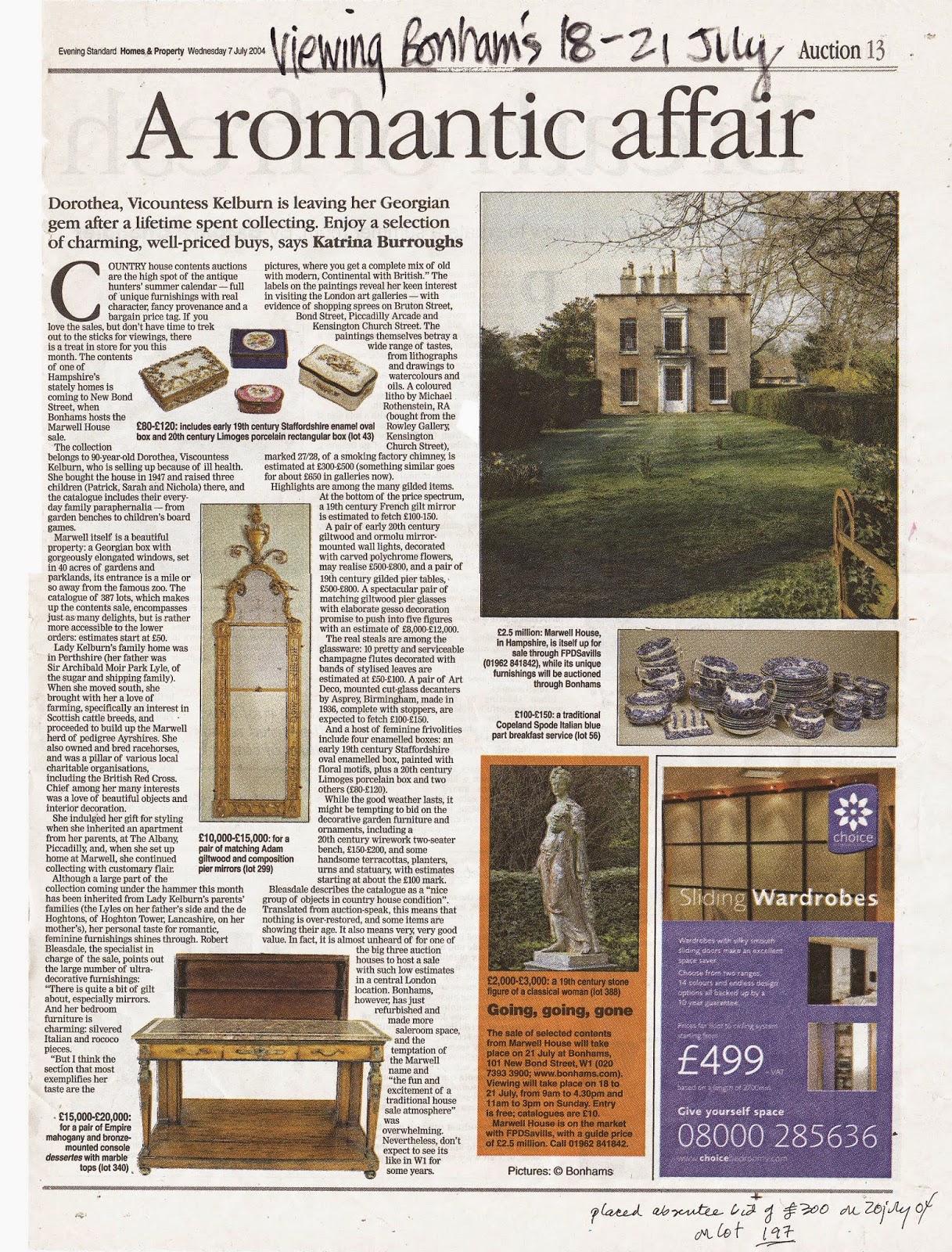I love provenance. At
its simplest provenance is the ownership timeline of an object achieved through
documentation that is usually – although not always – transferred with the
object from owner to owner. Sort of like a real estate chain of title for a
house or land parcel. Provenance adds story, intrigue if you're lucky, and authenticity.
It can elevate an object from prosaic to profound. I trained as an art
historian - the academic area where the term originated. But like the
ubiquitous “curator”, which is no longer reserved for professionals
working in museums, galleries and collections, provenance is used beyond
art history. What hasn’t changed though is the hope provenance will establish or
enhance object value.
Provenance has exploded in
retail use in the last decade where it’s used for value enhancement (e.g.
Holland & Holland’s expensive shooting stockings with the first name
and village of the granny who knit them handwritten on the hang tag) and brand
building. Simon Goff, founder of London rug company Floor_Story includes a memory stick with each sale containing certificate of provenance, the rug's history, concept drawings, technical plans, yarn dyeing, weaving, and production images. The information is also a mechanism to provide supply chain certification so consumers can avoid, for example, products made with child labour. Harvard Business Review
(December 2010) described the flip side of positive provenance as the “provenance paradox”, where an
object’s origin works against the product for geographical or other reasons.
Provenance can be manufactured to create a false trail to hide the origin of stolen or
looted objects. Similarly, although not criminally, some companies stretch
the truth with product labelling, so a product made from a majority
of foreign materials and labour might be labelled “Made in Britain” when only a
small percentage is native made or local materials.
Provenance should be rooted in trust and seller reputation. I’ve collected mid-century design and
art since the 1990s. Not high end and rare pieces, but good
works (pottery, clothes, textiles, glass, lights and a few pieces of furniture)
that appealed to me and the price was right (i.e.
inexpensive). My collection of early 20th century made in Pasadena Winfield and Gabriel pottery started when I found a Winfield hand thrown square plate in an Indio thrift store around 1992. I've photographed a Winfield coffee cup (left) and saucer (right, beneath red bowl) with pottery from British designer Georgina Wright.

I plan to sell some of my collection, but as my buyer
beware notice, none have “reliable” provenance beyond me remembering (if I'm lucky) which thrift store, charity shop, second hand store or outdoor
antique market I found it in. Oh yes, and some are from ebay when it was still trustworthy. My favourite ebay object is my Hans Wegner daybed. I bought it in 2002 (only bidder) from a seller on the Netherlands ebay site, written in Dutch before the days of Google translate. I trusted luck and placed a bid based on a single photo. The seller drove it to a local shipper, and it arrived in London ten days later. Perfect. I love my Wegner. The one below was sold by Retrouvius, London in 2012. It demonstrates how the back lifts up to convert it into a bed.
On
one rare occasion I bought at an auction house. In 2004 The Evening Standard
newspaper ran a story about the sale at Bonhams of the household of Dorothea,
Viscountess Kelburn (1914-2006) who was downsizing and leaving her “Georgian
gem” country house in Hampshire.
I decided to be a nosey parker and attend the
viewing not thinking I could afford anything. The newspaper report made no
mention of clothes, only furniture and objects, which is probably why I was the
only bidder on the single rack of clothing in the sale. I had my eye on a
fitted 1940s Hardy Amies wool jacket not realising my bid was for the whole
rack.
The other items I unwittingly bought were an Amies coat and eight well tailored but unremarkable Lachasse suits and dresses. My receipt from Bonhams –
my provenance - was perfunctory. Just the lot number and a description of one
of the ten garments in the lot. So if I ever need to prove the other garments
are from the Kelburn sale it will boil down to trust, because the provenance
evidence – aside from the inventory I handwrote on the invoice - is missing.


















